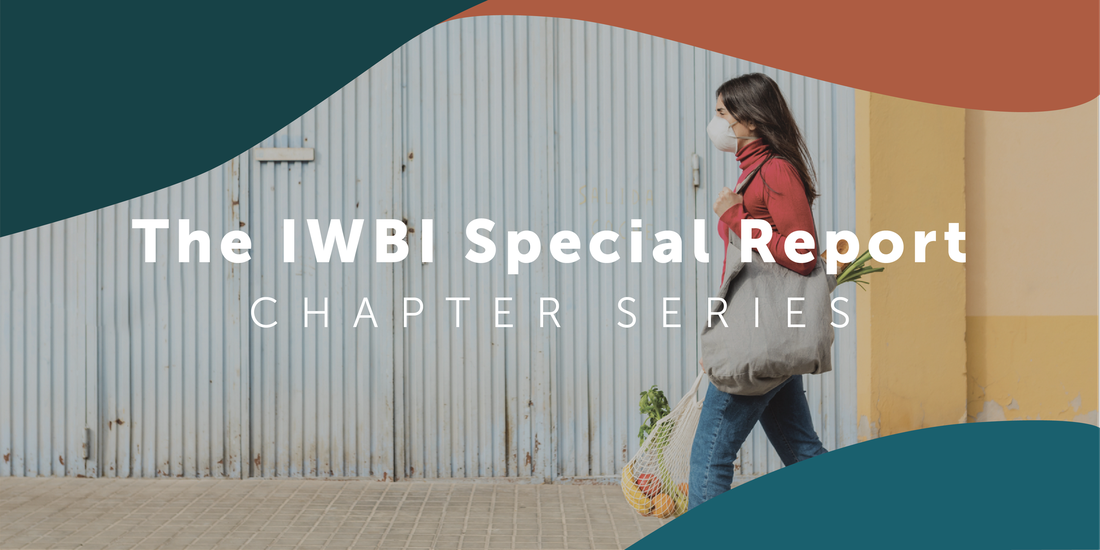The IWBI Special Report Chapter Series: “Senior Living Sharpens Its Focus on Health and Well-Being As Pandemic Exposes Systemic Issues in Eldercare”

by Shalini Ramesh, Ph.D.
In 2021, IWBI released an in-depth report that lays out research approaches and specific operational strategies as the world continues to respond to the COVID-19 pandemic and prepares for acute health threats into the future. Prevention and Preparedness, Resilience and Recovery: An IWBI Special Report integrates proven strategies from the WELL Building Standard (WELL) and actionable insights garnered from IWBI staff and nearly 600 members of the Task Force on COVID-19 and Other Respiratory Infections.
We’ve been reposting chapters from the report to help highlight specific themes and insights. The IWBI Special Report Chapter Series continues with “Senior Living Sharpens Its Focus on Health and Well-Being as Pandemic Exposes Systemic Issues in Eldercare,” authored by Shalini Ramesh, PhD, WELL Faculty, Director, Commercial.
Excerpt republished from: Prevention and Preparedness, Resilience and Recovery: An IWBI Special Report
In June 2020, an analysis of 17 Organisation for Economic Co-operation and Development (OECD) countries highlighted a disturbing fact: 42 percent of all COVID-19 deaths up to that point had occurred in senior living facilities. Clearly, from the outset of the pandemic, there has been a global failure to protect the elderly from COVID-19.
As residents of senior facilities reported higher feelings of social isolation, it has been equally clear that we’ve failed to alleviate the loneliness that accompanies modes of protecting senior living residents from this disease. That has contributed to adverse health effects, including death. As one resident put it: “This is the hardest thing I’ve ever been through. And I’ve been through the Second World War, 9/11, cancer and divorce. The isolation goes on for so long."…
Excerpt: COVID-19: Instilling Confidence through Sanitization and Personal Protection
That workers in senior living facilities need special protection isn’t a surprise. Because caretakers often go room-to-room, interacting with multiple residents, their safety is tantamount to the safety of the residents. At the outset of the pandemic, thousands of facilities lacked the basic personal protective equipment (PPE) to safeguard these workers and their residents. Months into the pandemic, many still did.
As a result, the reputation of and public confidence in the senior living sector has been damaged during the pandemic. According to senior living marketing agency GlynnDevins, confidence is lowest among the most important demographic: seniors themselves. In order to rebuild trust, facilities have an obligation to promote clean contact. That also requires the installation of hand sanitizing stations, even more frequent facility cleanings, the provision of PPE and instruction on proper PPE usage…
Excerpt: Addressing another Health Crisis: Social Isolation
For many residents, the despair felt from prolonged isolation can be just as debilitating as COVID-19. Even before the pandemic, more than 40 percent of older adults reported feeling lonely, a condition associated with increased rates of early death, dementia and heart disease. Take away social contact, as this virus requires, and you leave the conditions for mental and, eventually, physical decline.
Through their design, senior living facilities can often make things worse. Set up more like hotels, many facilities often make it difficult for residents to interact with one another. Design modifications could help allow for more meaningful, safer connection, especially in the outdoors. One approach is through incorporating neighborhood pods into the design, where smaller groups are organized in hubs and share common spaces for activities and socializing. While these spaces would entail significant investment, the returns on these projects will be higher now that a new health focus has taken root. Manny Gonzalez, managing principal for architecture firm KTGY’s 55-plus practice group, said: “I think you’re selling that wellness. And I don’t think it’s going to be tough to get a little bit of a premium for having that new community that has all of those amenities.”…
Excerpt: Starting a Race to the Top
Even before the pandemic, many senior living facilities were showing signs of decline. What has been described as a culture of prioritizing the bottom line had led some facilities into a race to the bottom with predictable ends: outdated facilities, cuts to critical services and a diminishing standard of care.
Now, in light of a deadly pandemic that has exposed these deficiencies, seniors and their families are calling for change. According to a survey by the American Seniors Housing Association, many prospective residents indicated that certain services would have to be offered before they considered moving into a senior living facility, among them clear cleaning protocols, accessible COVID-19 testing and the availability of a physician on-site or via telemedicine…
Conclusion
By 2050, one in six people worldwide will be over the age of 65, compared to one in 11 today. In Europe and North America, that ratio could increase to as many as one in four. As the world’s population ages at an unprecedented rate, the demand to rethink and radically improve senior living facilities will only increase. Perhaps one silver lining of the pandemic is that it has dramatically accelerated the timetable for reinventing an outdated model of caring for the elderly, and we have all the tools and knowledge to do so in ways that can help protect the health, well-being and dignity of some of our most vulnerable loved ones.
Read the full section here.

